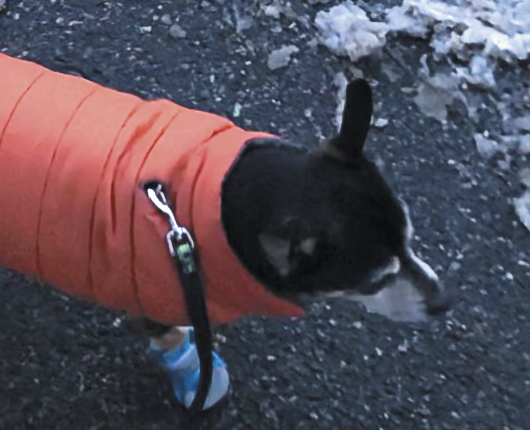Travis, a 12-year-old Chihuahua, is unhappy being outside in inclement weather. “He does not like rain or snow or cold temperatures,” says the head of the Tufts Animal Behavior Clinic, Stephanie Borns-Weil, DVM, who happens to be his “mom.” “Poor fellow,” the doctor comments. “He was meant for a warm climate.”
That’s why Dr. Borns-Weil has trained Travis to void on cue. “I use the cue to let him know that when the weather is bad and he doesn’t want to go for a walk, all he has to do is eliminate. Then we go right back inside. He is much happier for it.”
The cue should never be used as a substitute for walks, Dr. Borns-Weil says. Dogs need physical activity, so training a dog to “go” when you say so is not about finding a way to spend less time outdoors with your pet. It’s about special situations.
Reasons other than bad weather for training a dog to eliminate on cue:
- A lightning storm that makes it dangerous to be outside.
- Mobility or medical challenges that make it hard for someone to get their service dog outdoors other than at prescribed times.
- A schedule that doesn’t allow much time to take a dog out first thing in the morning (but allows plenty of time for two or three romps outdoors later in the day).
- A dog still hasn’t gotten the hang of not “going” in the house, and you want to teach him that outside is where elimination should happen.
Teaching the cue
Fortunately, it’s easy to teach a dog to “go to the bathroom” on cue because going to the bathroom is something dogs already do. You’re not introducing them to a new concept.
That makes train-
ing by the “capture” method a reliable approach, meaning that you capture the moment at which your dog spontaneously happens to engage in the behavior you want to elicit. Here are the steps.
- When your pet happens to start pooping (or peeing) outdoors, immediately say the cue you have chosen. Just make sure it’s not a term you would ordinarily say inside the house, or you could end up with your dog complying with your wishes when you didn’t mean for him to. Dr. Borns-Weil uses “Do your business.”
- Remain quiet as your pet does his business; he needs to concentrate.
- The very moment your dog finishes, offer him warm, enthusiastic praise and a delicious treat.
- Repeat every single time your dog relieves himself over the course of the next several days. Soon enough, you will be able to say the cue even before your dog squats or lifts his leg, and he will be able to comply. (You should still offer him a treat for following through every so often so he remembers that there might be something in it for him.)
Note: The cue will not work if your dog doesn’t have to go. “But most people have a good sense of their dog’s needs and are able to work with their pet’s usual routine,” Dr. Borns-Weil says. She adds that since most dogs don’t get to choose when they go outside, they are usually ready to do their business when we give them the chance.





